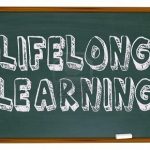The list consists of the 4 best videos on 21st century learning provided by Amy Erin Borovoy
who has been providing tools and inspiration for educators through her work at Edutopia.org!
Here is a list of those videos.
What Is 21st Century Education?
In the past 5 years, growth of the digital universe has increased by 1000%. Top jobs in 2012 such as social media strategist, user experience specialist, bigdata analyst didn’t even exist a few years back. Clearly, technology is exponentially taking over as a formative influence in contemporary times. And in order to use it effectively, it is essential to begin its indoctrination at the very first level of educating, which is in school. Preparing students for the 21st century isn’t just about technology or skills. It will be all about creativity, cultural awareness, problem solving, innovation, communication, productivity, collaboration and exploration, with the ultimate aim of making the classroom as dynamic as the world around us.
Educate the Heart
A child’s heart and mind are fragile. She is sent to school to provide her with tools necessary for life. It is a wicked and competitive world outside. And it is the responsibility of educators to prepare children for the world and the life outside. However, in such evil times, there’s a pressing need for educators to educate with the heart, so that the child learns to navigate the world outside with compassion, acceptance and tolerance. If we want our children to grow into socially and emotionally capable people, it is the need of the hour to provide a balanced education which puts importance on educating both the mind and the heart.
Learn to change, Change to Learn
Distinguished individuals in education discuss the need for change in the classroom for the 21st century. Here is what they have to say. The students are having much more rich environment for learning outside of school than in the schools.
Kids are rich content developers through their social networking presence, they are good communicators through emails, IMs and text messaging, but all these are banned in schools. “Every turned off device is potentially a turned off child.”
We have to accept as educators that technology is not just for traditional teaching it is to create a completely new environment. Technology use is about community, connectivity, relationships and access to resources. Technology is a great aid to learning for a student.
School is not the only place where students learn, they learn at home, through various communities, museums, libraries and of course online. Providing and surrounding students with the best quality guides and teachers no matter where they are is essential. Classroom system can be changed to a community system in 21st century. It’s about opening the door to resources, labs online and connecting them to opportunities which will fundamentally shift their academic experience which make them prepared for not only college but for life.
Start with teacher – If you want students to make the global connections you start with teachers first and give them the tools, let them know about the opportunities to connect with other teachers around the country and world so that then they can guide their students as well.
21st Century Literacy is a lot different than the current model that most of us were raised with. It is not about memorizing the facts that they will remember all through their life, but it’s about knowing how to find information, how to validate it, how to synthesize it, how to leverage it, how to communicate it, how to collaborate with it, and how problem solve with it.
An Introduction to Technology Integration
In the 21st century, technology is a tool which can be used to fundamentally transform what a classroom is. Integration of technology with learning as a tool provides you with a scope to explore what you can do with knowledge, what you can make of it and what you will allow your students to make of it. Technology has numerous advantages. Unlike the traditional learning system, students today are producing their own creations using digital instead of analogue tools. Such creations afford them an ownership of their learning, which rote-learning denies. Moreover, technology allows the possibility of everyone learning at their own pace. Research indicates that integrating technology with fact-to-face teacher time generally produces better academic outcomes than employing either technique alone, giving educators all the more a reason to integrate technology in the classroom.


